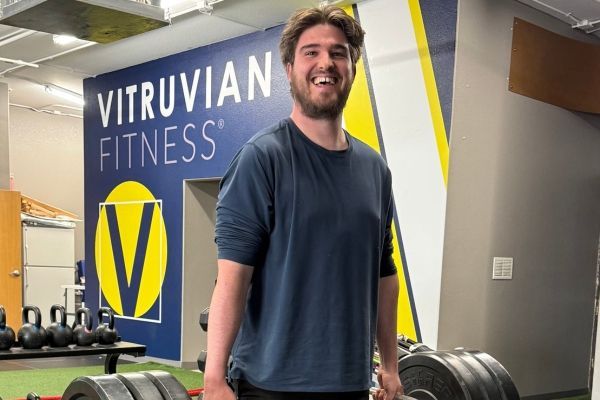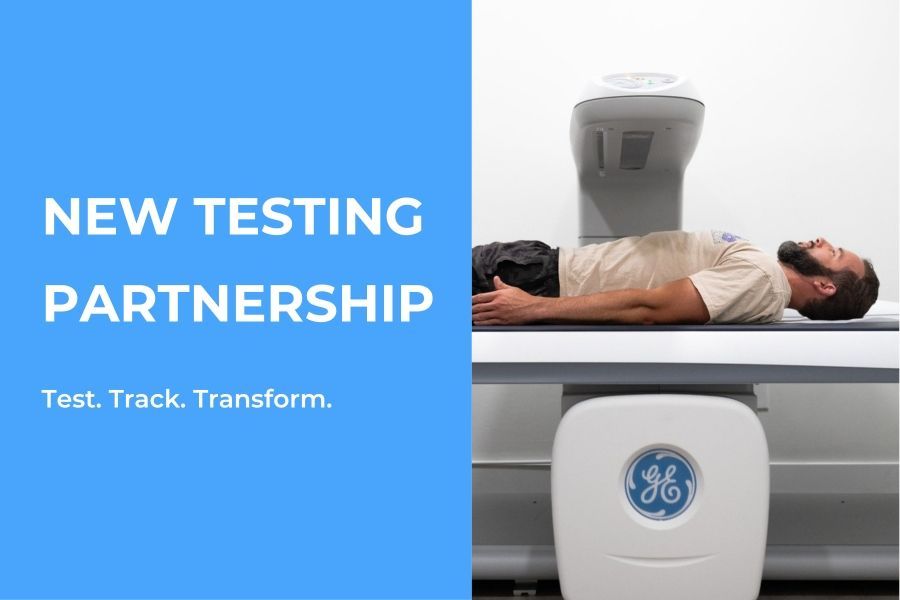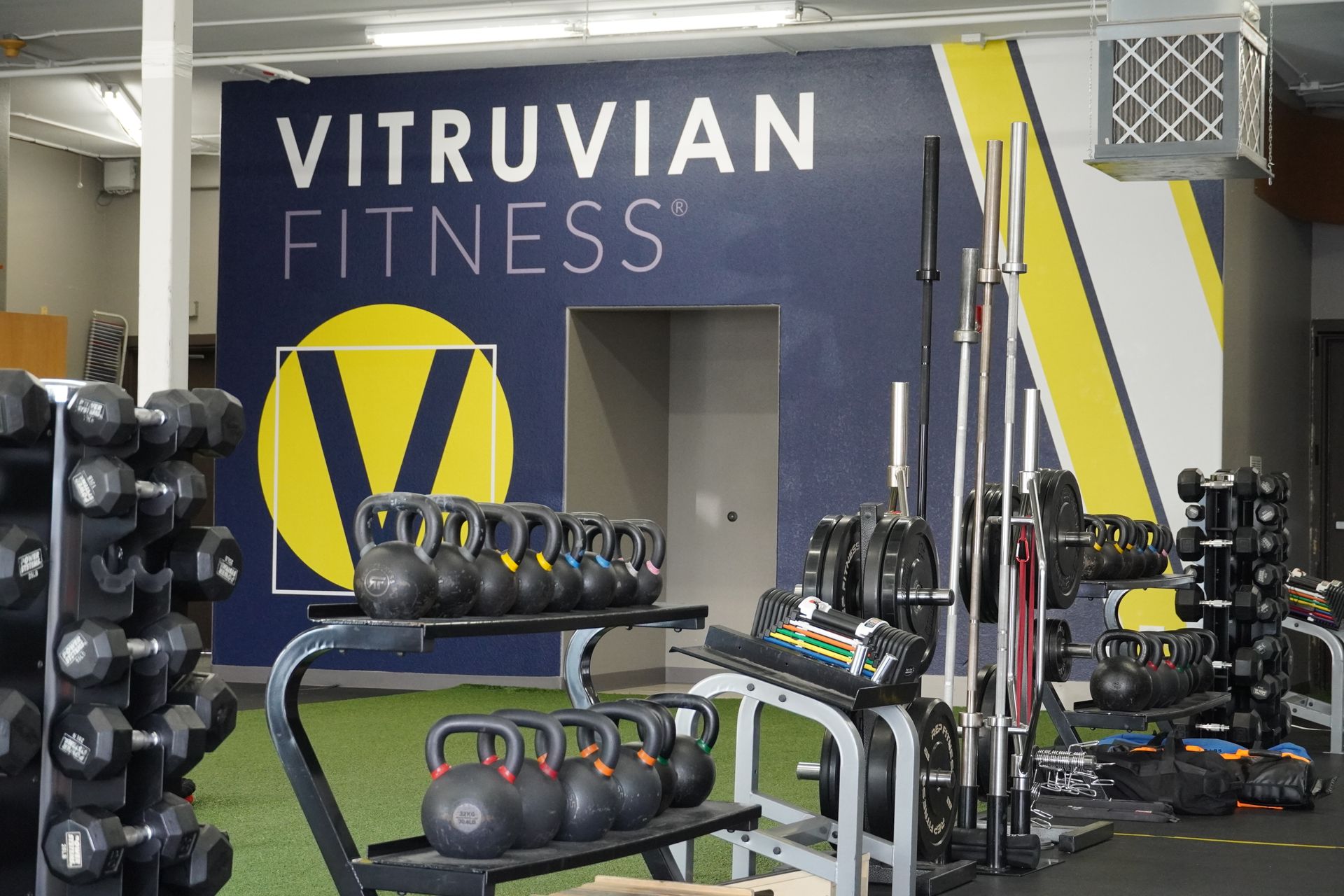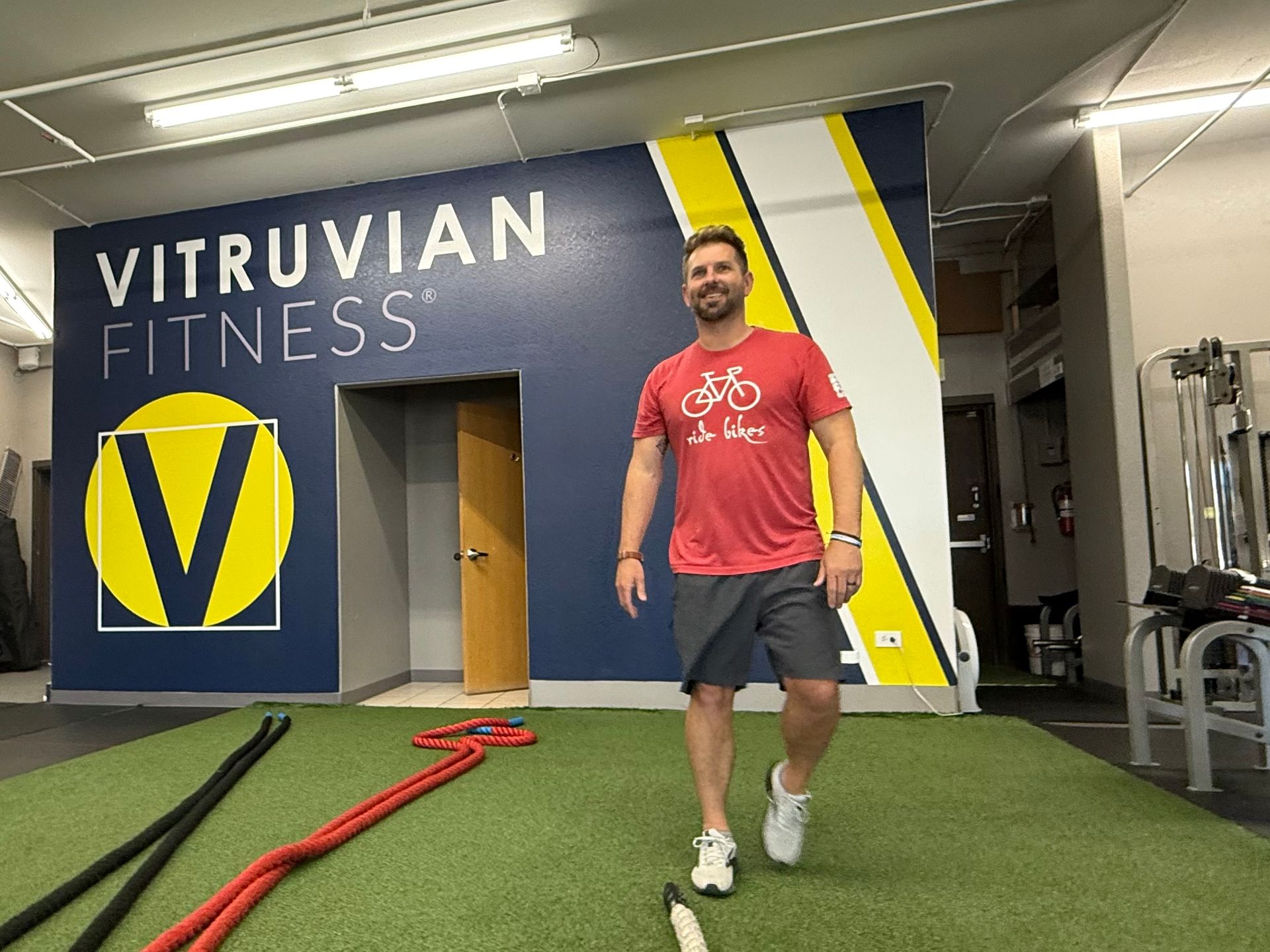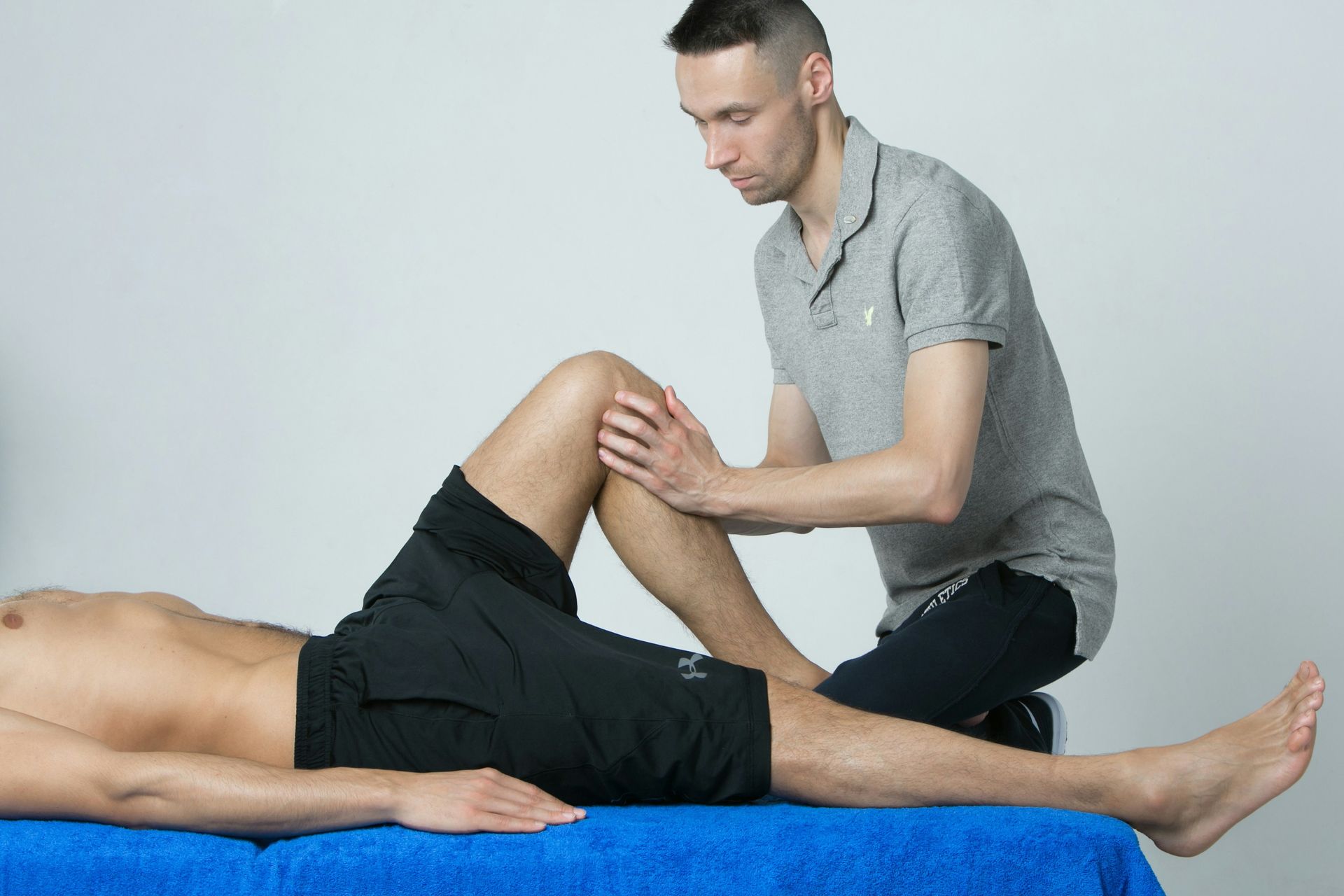“Pressing Reset” at Vitruvian Fitness®
Reboot Your Movement: The Power of Pressing Reset
Our tagline is Move better. Get stronger. Feel Great. That's what we do. In that order.
So when it comes to getting stronger, the most visible aspect of strength training is weight-lifting. The concept of progressive overload— increasing intensity, volume, loads, and other variables— is what makes you stronger.
However, lasting progress starts with moving well first. High-quality movement leads to high-quality results.
That’s why we incorporate two separate but complementary systems into our programming: The Functional Movement Screen (FMS) and Original Strength’s "Pressing Reset" into our programs.
The gist of the FMS is to identify what we do well, what we don’t do well, remove or improve the not-so-good, and add more of the oh-so-great. We include the FMS in every new client’s onboarding session and every program is designed only after we establish a baseline movement capacity.
The FMS tells us what needs improvement. OS Resets are one of the ways we achieve those improvements.
In this post, let's dig deep-ish into Pressing Reset as a foundational tool for better movement.
What is "Pressing Reset?”
Pressing Reset is a system developed by Tim Anderson from Original Strength that ”reboots” your body's natural movement patterns—the ones we developed as babies—to restore reflexive strength, coordination, and mobility. These simple, yet powerful movements (like diaphragmatic breathing, head nods, rolling, rocking, and crawling) help improve the function of your neuromuscular system, allowing you to move with less effort.
Movement is a continuous loop of sensory input, processing, and action. Your body senses the world around you (through vision, touch, balance, and proprioception), your brain interprets this information and sends signals to your muscles, and you move. Each movement creates new sensory feedback, helping your brain refine and improve coordination over time.
At its most fundamental level, the way we move is controlled by our nervous system. When it functions optimally, we move smoothly and with little effort. When it doesn’t, we struggle with stiffness (neural inhibition), poor coordination (inefficient movement organization), and pain (pain).
Let’s break it down.
Stimulating The Vestibular System
The vestibular system, located in the inner ear, is responsible for detecting motion, balance, and spatial orientation. It has direct connections to the central nervous system (CNS), influencing how we perceive movement and how our body maintains posture and stability. Purposeful movement—especially head and body repositioning—can sharpen this system, improving coordination, posture, and balance.
When we Press Reset, we influence the vestibular system by performing controlled movements that change head position and spatial orientation. These movements provide sensory input to the semicircular canals and otolith organs in the inner ear, which detect rotational and linear acceleration. This information is then relayed to the brainstem and cerebellum, which integrate it with visual and proprioceptive feedback to enhance balance, coordination, and movement efficiency. As a result, movements become better organized and posture improves which lead to better exercise outcomes.
The Role of the Vagus Nerve and the Autonomic Nervous System
In addition to influencing the vestibular system, Pressing Reset can also influence the autonomic nervous system (ANS) via the vagus nerve. The vagus nerve is the longest cranial nerve in the body, extending from the brainstem down to the abdomen and is a key regulator of the parasympathetic nervous system. It helps control involuntary bodily functions such as heart rate, digestion, and respiratory rate, playing a crucial role in promoting recovery, relaxation, and homeostasis by counterbalancing the stress-driven sympathetic nervous system.
Essentially, it regulates the balance between rest and digest and fight or flight.
Movements like diaphragmatic breathing, rocking, and rolling stimulate the vagus nerve, helping to calm the nervous system, reduce inflammation, and speed up tissue healing.(1)
Stimulating the vagus nerve through resets has the additional benefit of speeding up recovery from injuries, reducing inflammation, improving neuroplasticity, and other cool neuromuscular adaptions.(2)(3)
How We Use It at Vitruvian Fitness
At Vitruvian Fitness, resets are a key part of our training philosophy. Here’s how we integrate them:
- Movement Prep Before Training: Resets help prepare the body for movement, reinforcing good posture and control. Done with intention, resets help prepare you for your workout so you move more easily and efficiently overall.
- During Rest Intervals: Resets are great to use as active recovery between big lifts that require extended rest intervals. We can also use resets to "course-correct" when form breaks down, improving movement quality in real time.
- For Recovery & Longevity: Performing resets at home between workouts can accelerate recovery and improve daily function.
The Resets: Simple and Powerful
They are so simple, even a baby can do them! Actually, that’s who we learned them from.
- Breathing – Lips closed, tongue pressed to the roof of the mouth, inhale and exhale through the nose. Practice this method of breathing throughout all the resets.
- Head Nods and Turns – Lead with your eyes, then your head, while breathing properly.
- Rolling – Move your body in various directions while maintaining controlled breathing.
- Rocking – From a hands-and-knees position, shift back toward your heels and return.
- Connecting the X – Engage cross-body movement patterns like:
- Cross Crawls – Alternating opposite hand-to-knee taps.
- Crawling – Move across the floor with contralateral limb coordination (like a baby).
- Marching and Skipping – Add cross-crawls for enhanced coordination.
The Golden Rules of Resets:
- Always breathe correctly.
- Never move into pain or discomfort.
- Follow rules #1 and #2—no exceptions!
Watch a demonstration of each of the resets on our YouTube Channel.
Why You Should "Press Reset" at Home
Doing these resets for just a few minutes a day can have a massive impact on how you move and feel. Daily resets lead to:
- Better posture and balance
- Less stiffness and pain
- More energy and vigor
- Improved performance in workouts (and life!)
Your Challenge: 5 Minutes a Day
We challenge you to spend just 5 minutes a day on resets—before workouts, in the morning, or anytime you need to shake off the cobwebs and feel your best. It doesn’t need to be complicated—just a few deep breaths, some rocking, and a couple of head nods can make a difference.
Not sure where to start? Ask one of our coaches, and we’ll help you create a simple reset routine just for you!
Footnotes
- Pavlov VA, Tracey KJ. The vagus nerve and the inflammatory reflex--linking immunity and metabolism. Nat Rev Endocrinol. 2012 Dec;8(12):743-54. doi: 10.1038/nrendo.2012.189. PMID: 23169440; PMCID: PMC4082307.
- Darrow MJ, Torres M, Sosa MJ, Danaphongse TT, Haider Z, Rennaker RL, Kilgard MP, Hays SA. Vagus Nerve Stimulation Paired With Rehabilitative Training Enhances Motor Recovery After Bilateral Spinal Cord Injury to Cervical Forelimb Motor Pools. Neurorehabil Neural Repair. 2020 Mar;34(3):200-209. doi: 10.1177/1545968319895480. Epub 2020 Jan 22. PMID: 31969052; PMCID: PMC7080607.
- Hays SA, Ruiz A, Bethea T, Khodaparast N, Carmel JB, Rennaker RL 2nd, Kilgard MP. Vagus nerve stimulation during rehabilitative training enhances recovery of forelimb function after ischemic stroke in aged rats. Neurobiol Aging. 2016 Jul;43:111-8. doi: 10.1016/j.neurobiolaging.2016.03.030. Epub 2016 Apr 7. PMID: 27255820; PMCID: PMC5206764.
You might also enjoy these posts . . .
